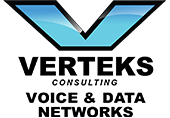Desktop-as-a-Service solutions help organizations cut costs and improve productivity by offloading much of their desktop management burden.
In the traditional office computing environment, everyone in the company has a desktop or laptop computer loaded with applications and data and managed by the internal IT staff. However, increasing costs and complexity are driving more organizations to adopt Desktop-as-a-Service (DaaS) solutions that deliver the entire desktop environment from the cloud.
DaaS is a form of desktop virtualization offered by third-party providers on a subscription basis. It allows organizations to offload a tremendous administrative burden by enabling users to access applications, files, folders and documents from anywhere on any device. It eliminates the need to purchase the physical infrastructure associated with traditional desktop environments, and includes provisioning, patching and maintaining all the resources required to host workloads.
“Businesses want a modern and secure desktop, application and data delivery strategy that reflects the reality of how users work and can keep up with the rapid change of business applications and devices, without amplifying the management and security burden that already weighs heavily on IT shoulders,” said Mark Bowker, Senior Analyst, Enterprise Strategy Group. “DaaS possesses the unique combination of attributes that appeals to businesses across industries: improved time to value, cost reduction and enhanced security.”
Desktop Challenges
Traditional desktop management has become an economic and operational drag on most organizations. Gartner analysts say the purchase price of a typical end-user desktop is only about 20 percent of its total cost — the other 80 percent goes towards installation, configuration, updates, systems management and technical support. It can all add up to more than $5,000 a year, although support costs will actually increase as equipment ages and performance issues require more attention.
Cost isn’t the only negative associated with aging desktops. More than 80 percent of employees say their desktop computers are outdated, and more than 70 percent say their desktop software is outdated, according to a ZenBusiness report. That has a direct impact on productivity — an AMD study found that the average office worker wastes the equivalent of 24 workdays each year waiting on slow or outdated hardware or software.
Additionally, older desktops and systems are more likely to have unpatched vulnerabilities that create openings that hackers can exploit. There’s also heightened risk that older technology will result in noncompliance with a host of government and industry regulatory requirements.
DaaS vs. VDI
DaaS has emerged as an effective remedy, but it isn’t an entirely new approach. It has evolved from other desktop virtualization models such as virtual desktop infrastructure (VDI), which organizations have used for decades to centrally manage the entire desktop infrastructure and deliver it to users as a service. In the VDI model, however, virtualized desktops are delivered from the data center. That means hardware, software, licensing and deployment are all managed in-house.
DaaS relieves IT teams of those responsibilities. As a form of VDI hosted in the cloud, DaaS is fully managed by a third-party provider. Internal IT teams aren’t bogged down with configuring desktops, maintaining software or managing servers. The cloud service provider also handles connectivity and security and maintains the cloud infrastructure.
DaaS adoption is expected to grow steadily through the end of the decade as organizations move to support hybrid work environments with a mix of in-office and remote employees. A new report from Verified Market Research projects the DaaS market to grow from $4.2 billion in 2021 to $18.7 billion by 2030 at a CAGR of 20.6 percent.
DaaS Benefits
Budget relief is among the chief drivers. According to various studies, a DaaS strategy can reduce capital expenditures on hardware by 56 percent annually and can cut operating expenses by up to 50 percent over four years. Other benefits include:
- Flexibility: With the rise of mobile, remote and hybrid work models, people can’t be tethered to a single location. DaaS users can access their data and applications from anywhere on any device. Users can even switch devices without losing any updates or changes to the cloud desktop.
- Scalability: Cloud-based desktops can be provisioned and deprovisioned as necessary to accommodate market fluctuations or seasonal workload changes.
- Management: DaaS shifts most management tasks to the cloud provider. There’s no need to upgrade hardware or software. All you need is a lightweight piece of hardware with an Internet connection.
- Security: Data and applications reside in the cloud rather than on vulnerable end-user devices. Additionally, DaaS providers typically implement a variety of security controls such as multifactor authentication, antivirus and strong encryption.
- Future-proof: DaaS is always up to date with the latest application and operating system updates from the cloud provider.




